Sitewide Sale: Use code Get5Nutra for 5% OFF all products. FREE shipping & 30-Days Hassle-Free ReturnsShop Now
Choosing the best hydroponic grow lights is vital for indoor plant cultivation. But what if you’re new to hydroponics or unsure which lighting to pair with your plants? This article cuts through uncertainty, offering clear insights on maximizing growth with the right lighting—whether that’s a question of light intensity for tomatoes or the energy efficiency of LEDs. Expect indispensable tips on everything from setup to troubleshooting.
Selecting the right hydroponic grow lights depends on space, plant types, and budget, with considerations for light intensity and environmental conditions like temperature and humidity.
Popular hydroponic with integrated grow lights include vertical farming, all-in-one hydroponic kits, and modular systems, each offering different benefits such as space efficiency and customization.
LED grow lights are preferred for hydroponics due to their energy efficiency, long lifespan, and customizable light spectrum, which can significantly reduce operational costs and enhance plant growth.
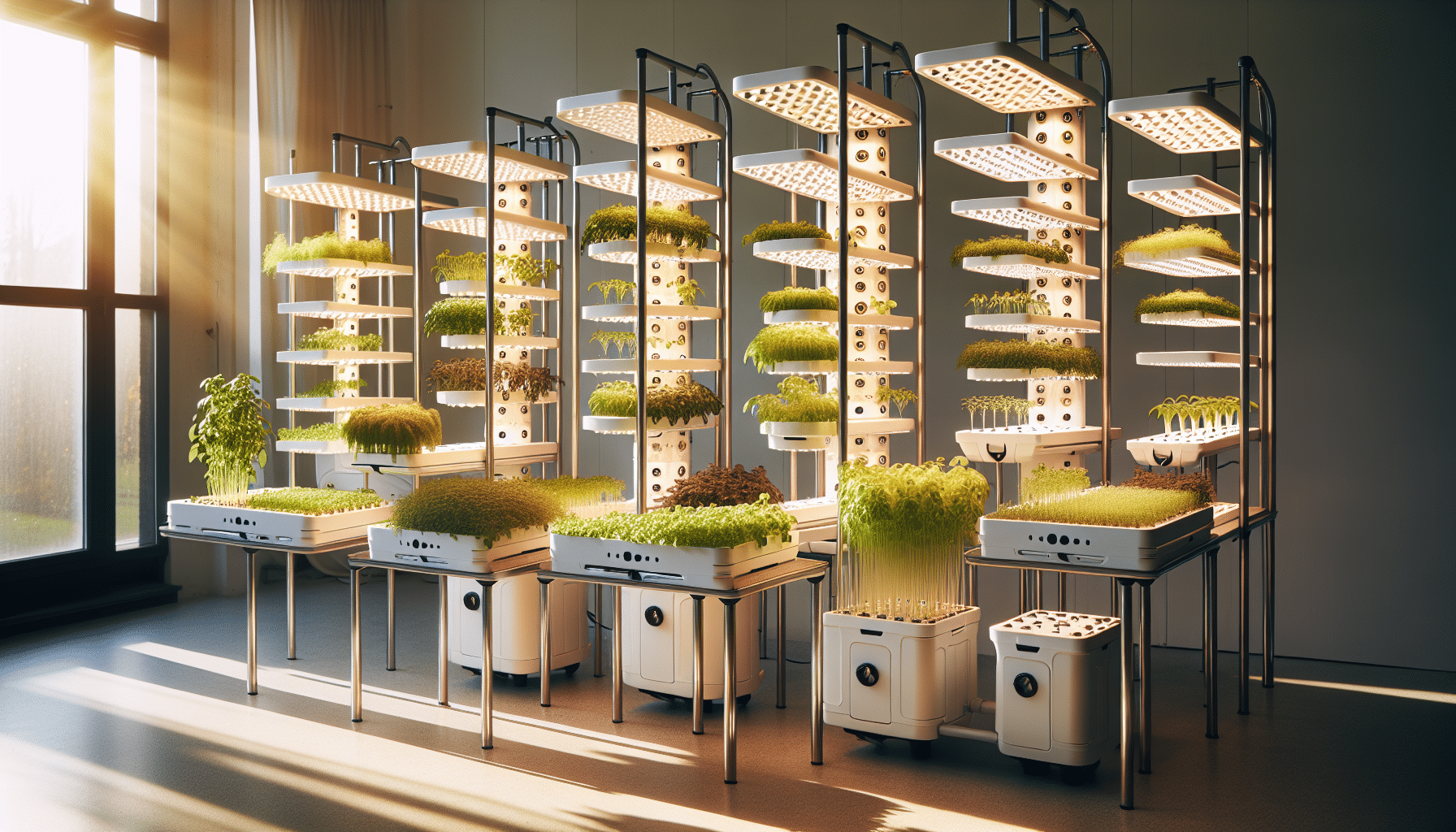
When growing plants indoors, hydroponics must be taken into consideration. This includes understanding what type of light source will work best for your specific setup to support the growth of the plants. Many inexperienced growers make a mistake by using inadequate or too small lights, which then results in slower development and overall poorer plant health. Knowing how much space is available as well as factors such as budget all have an impact on selecting a suitable lighting system that keeps up with even high-demand species of vegetation so they can grow vigorously and reach their full potential. Some variables contribute to achieving optimal success when cultivating indoor flora. These include knowing the proper types/amounts associated with both hydroponic systems & lamps required per crop area being worked within whatever setting necessary, from home gardening spaces right through commercial farming operations!
When deciding on a hydroponic system, it’s necessary to consider the space and environment available. The spacing of plants depends on what kind of crops you will be growing: for lettuce or leafy greens, around 6-8 inches is enough while tomatoes need more at 12-24 inch intervals.
When using grow lights in your designated ‘grow room’ remember that this can generate heat which affects humidity levels. Maintenance of appropriate temperatures and humidities is key if you want healthy growth from your plants under their new lighting system!
When it comes to hydroponics, selecting the correct lights is of utmost importance for achieving strong plant growth and high yield. Light intensity needs are varied between various types of plants, tomatoes and peppers require higher levels than lettuces or spinach do. Specifically, lettuce in a hydroponic system does best with 400-700 micromoles whereas fruit-bearing vegetation such as tomatoes grows optimally when exposed to 800–900 micromoles. Therefore, choosing suitable hydroponically adapted lamps that meet the necessary light requirements for each type of crop must be taken into account by growers wanting optimal results from their systems.
When selecting hydroponic grow lights, one must consider their budget. The price of these varies depending on the complexity and features they offer. Basic options start from around $150 to even up to $400. It is necessary to calculate annual maintenance costs which can range between $1,500 – 2,000 per year. There are some reasonably priced yet efficient models such as the 12-Pod Hydroponic Indoor Garden with LED Grow Lights or the iDOO Hydroponics Growing System that provides WiFi connectivity along with its 8-inch grow lights. Pods for users to get maximum benefits out of hydro-lighting technology without breaking the bank.
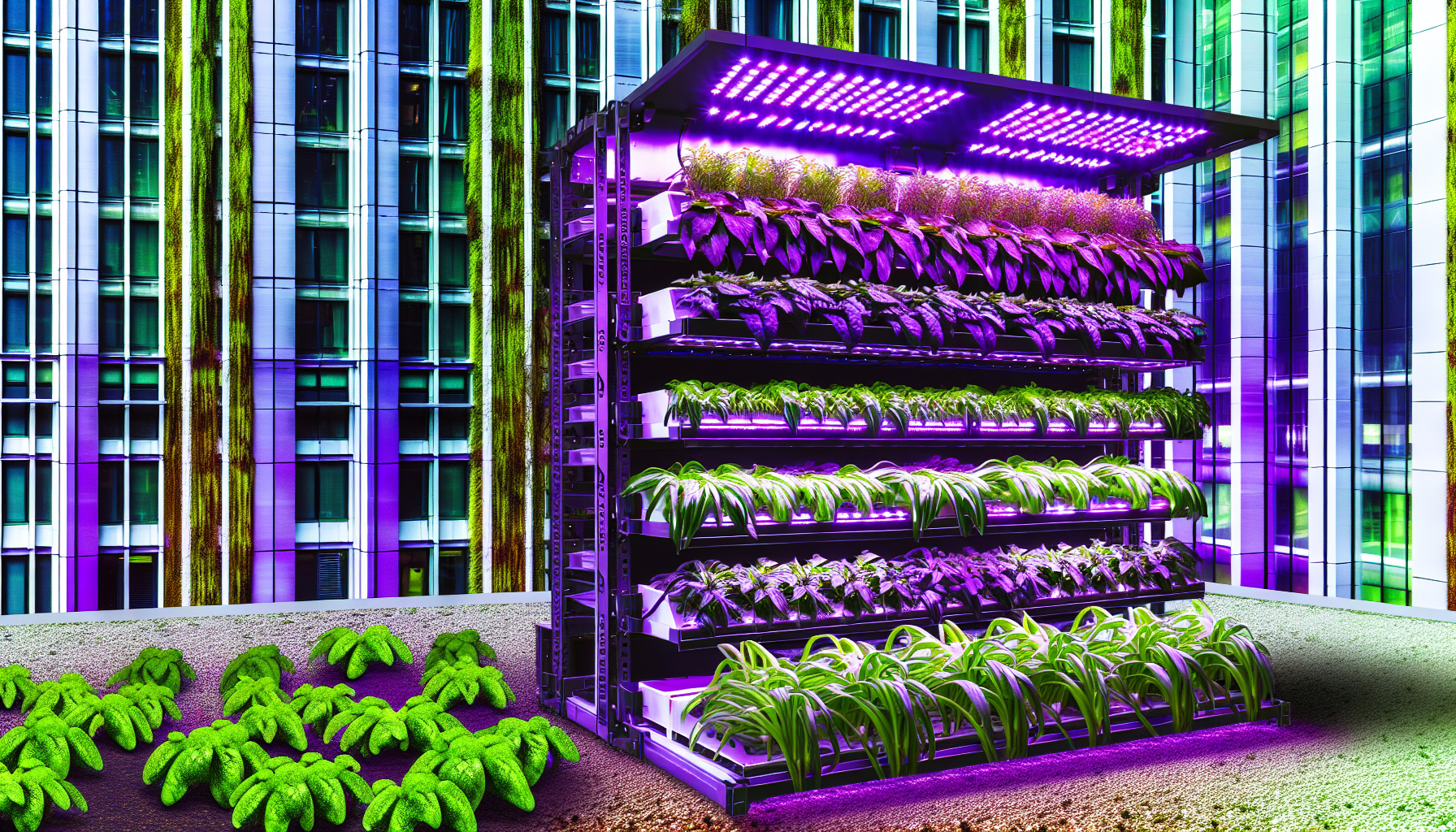
Indoor growers often favor hydroponics which are equipped with grow lights. These hydroponic grow lights include all-inclusive kits, vertical farming setups, and customizable modules, each offering a distinct set of advantages to cater to the needs of cultivators. By selecting from among these different lighting solutions it is possible to achieve successful growth in an indoor setting.
Vertical farming systems have become a popular option for urban areas or spaces with limited space. These setups save on square footage by vertically stacking beds of plants and employing multi-layered shelves, resulting in the ability to cultivate more vegetation within an area’s boundaries. There are numerous added advantages as well: water efficiency, improved use of living quarters, and unvarying yields throughout the year. Decreased need for chemicals and pesticides, etc. An important factor to keep in mind is that a hydroponic lighting system and indoor vertical farms require ample electricity expenditure, especially when making use of artificial lighting facilities.
Hydroponic kits, which are perfect for newbies or those looking for a complete set-up solution, come with all the elements needed to begin growing your produce. These sets include:
An integrated water pump that increases oxygenation in the water
Simple user controls
LED lighting mimicking natural sunlight cycles
Automated nutrient systems too.
These units facilitate the growth of various plants and guarantee healthy root development such as lettuce, spinach, herbs, arugula, and strawberries among other options. Offering an easy way to begin developing one’s garden products, these packs make it very easy by supplying everything necessary inside them!
Hydroponic Grow Light is ideal for both experienced and novice cultivators as they allow for scalability with their modular setup. These systems feature LED lights that can be managed through a computerized timer, offering control over the intensity and length of illumination across different spectrums, cool or warm. Each plant is held in separate net pots/cups, making it easier to switch crops when necessary without disrupting your entire system. Should Growth become desired, such modules may simply be extended accordingly.
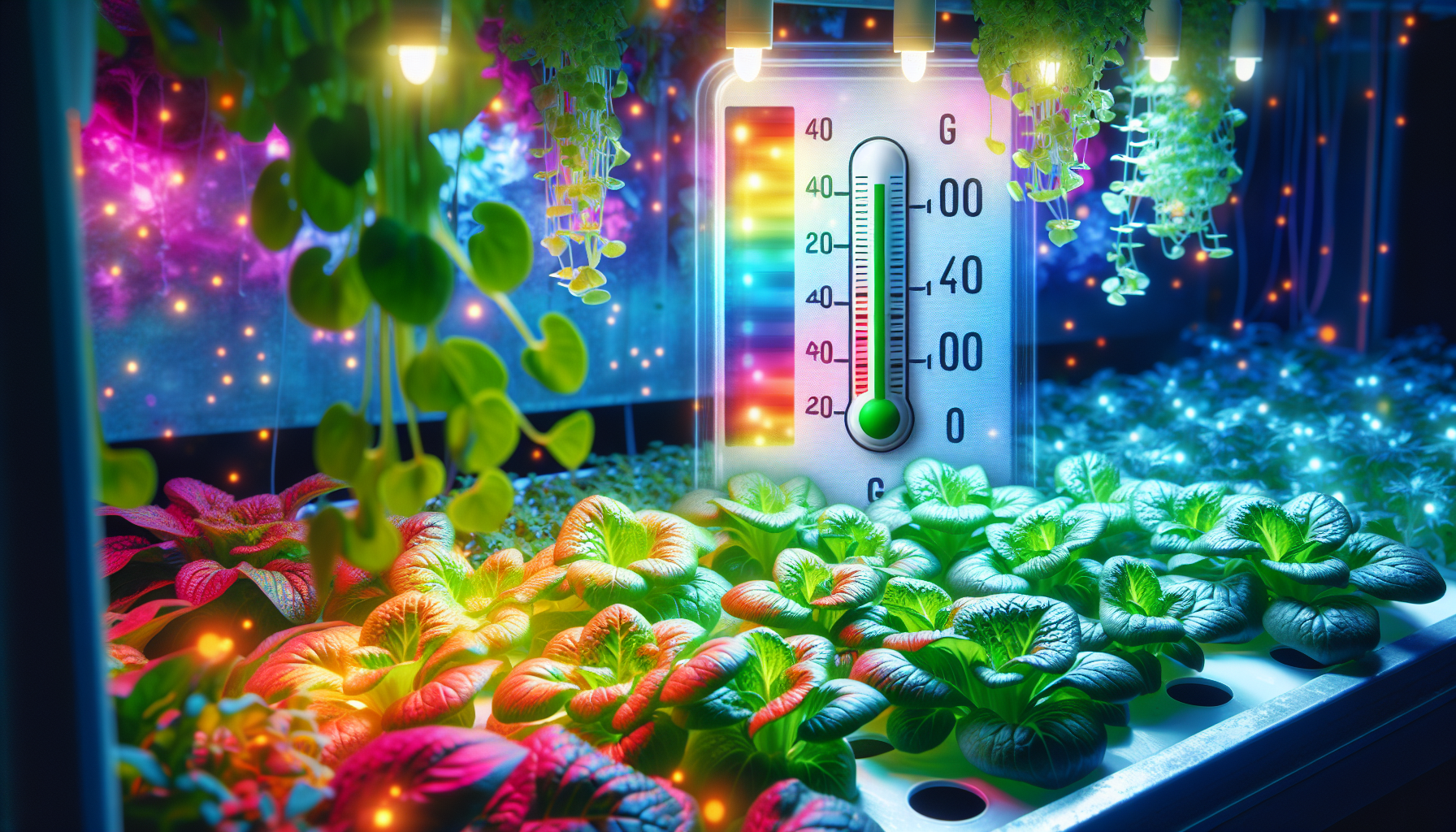
Grow lights that are LED-powered possess many benefits for hydroponics setups. Not only do they prove to be cost-effective, but their long life and tailor-made light spectrum make them an ideal choice for indoor cultivators looking for a steady source of energy-efficient lighting solutions.
LED grow lights are acclaimed for their energy efficiency and light output. These types of lights emit a higher intensity with little to no heat, resulting in less electricity expenses compared to fluorescent lighting options.
The remarkable effectivity makes LED grow lights an economical as well as eco-friendly option in hydroponics, especially thanks to reduced power usage along with needing less cooling from the lower production of warmth emitted by the bulbs.
LED grow lights offer a longer lifespan compared to regular light solutions typically used in hydroponic systems. With an average of 50,000 hours before needing replacement, this can help cut maintenance and upkeep costs for these types of setups. Cleaning the diodes using a microfiber cloth with isopropyl or rubbing alcohol regularly will also extend their lifetime benefits further. In contrast to other kinds of lighting options that require more frequent replacements. LED Grow Lights provide added cost-effectiveness and are excellent choices for hydroponic methods due to such extended lifespans.
Growers can benefit from the customizable light spectrum of LED grow lights. By replicating natural sunlight, these lights enable users to adjust their color temperature depending on what is necessary for their plants – red being ideal for stem and leaf expansion while blue facilitates vegetative growth. A specifically tailored red hue will be beneficial in helping flowering plants reach optimal yields during blooming stages. The control that comes with this customizability enables growers to create exactly the right environment when it comes to both colors and intensity of light so they can increase productivity among their flora with confidence.
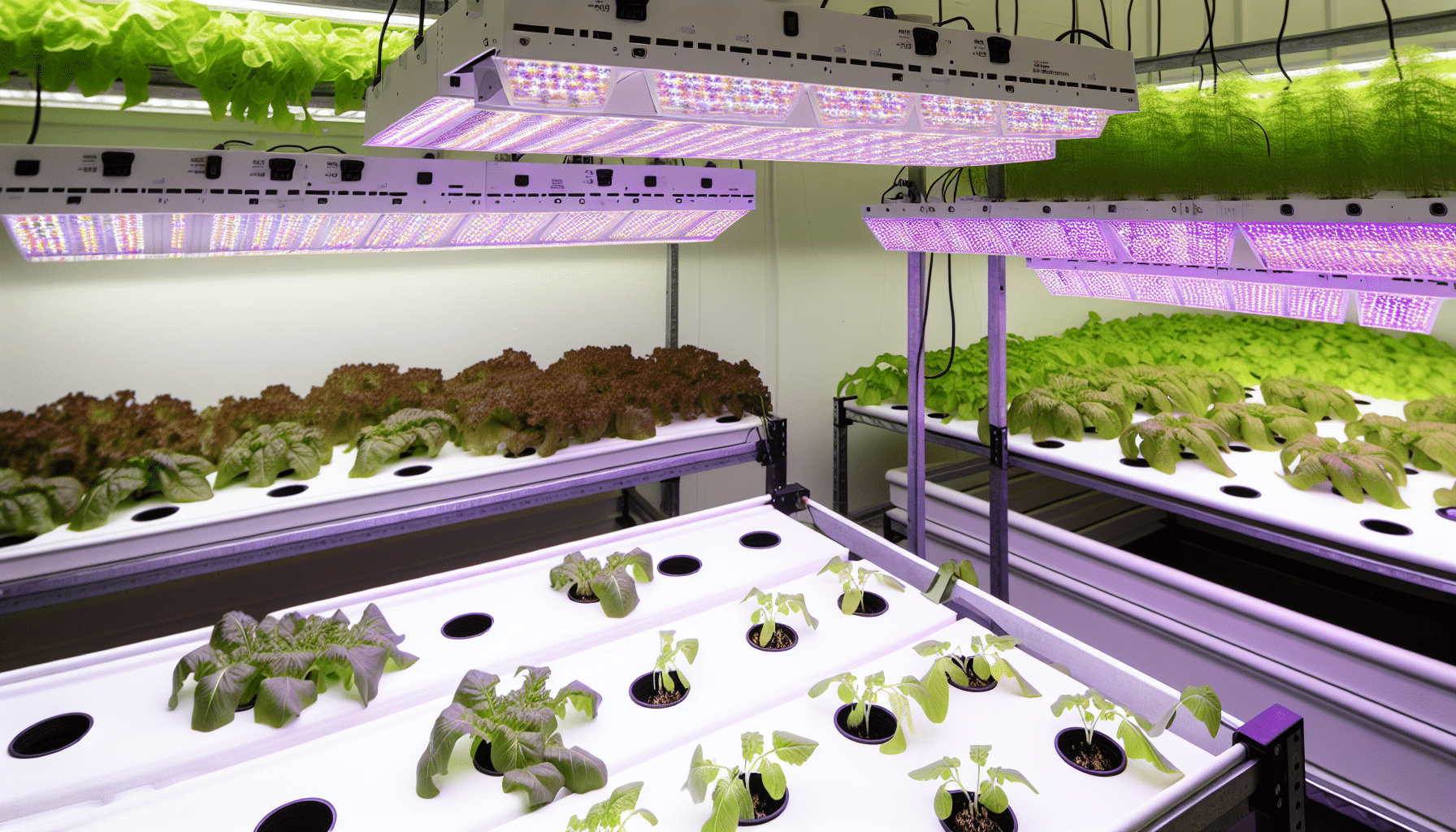
Ensuring the maximum growth of your plants is dependent on the correct usage and configuration of grow lights in a hydroponic system. It includes correctly placing the light, and adjusting its duration and brightness regularly, while monitoring for optimal plant development. To maximize efficiency within this setup, maintaining proper light placement as well as altering intensity are key components to ensure successful results with healthy vegetation growth!
The presence of grow lights and their positioning can dramatically alter a plant’s development. For hydroponic plants, the preferred starting distance from the light is 12 inches away. Although they get bigger, you must adjust the lighting so that it does not cause burning or wilting because of inadequate exposure to illumination. To make sure everything gets equal amounts of brightness, set your LED lamps up in such a way that all parts are illuminated without any “hot spots.” You can also use movable lights on tracks or turning racks for more even diffusion across your plants’ surfaces.
Using light of the correct duration and intensity is necessary for optimizing hydroponic systems. Intensity has a major effect on plant growth, with too little or excessive lighting having adverse results. If you detect any indicators of distress in your plants like shedding leaves, withering foliage, or impaired development then it might be time to make changes to the amount/positioning of illumination by using lux meters as a precision guide. Hydroponics will not reach its potential without proper regulation regarding lighting requirements across all stages and phases to ensure optimal crop production within these types of system setups.
With careful upkeep of both the hydroponic system and grow lights, one can ensure a healthy environment to facilitate ideal plant growth. To monitor key features such as pH levels, temperature changes, water content, and dissolved oxygen (DO), monitoring tools like wireless gateways plus sensors within your designated area – or ‘grow room’ – are needed.
Keeping an eye on signs from your plants including odd discoloration in leaves, longer stems than usual, or inadequate leaf formation could be indicative that modifications need to take place when it comes to lighting setup/nutrient solutions. Through consistent surveillance, you’re able to guarantee rapid detection should any issues arise with necessary adjustments made right away for effective results.
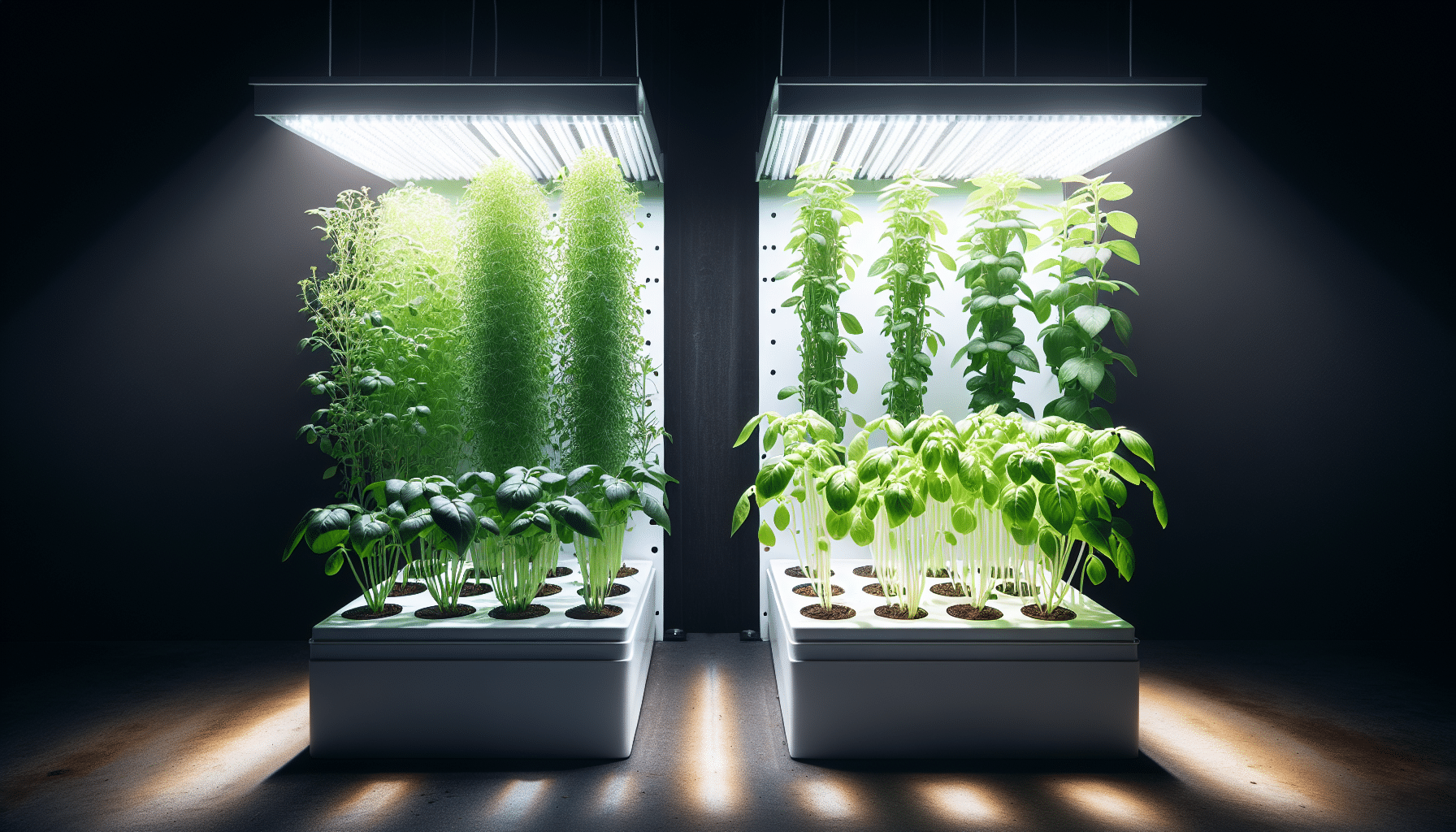
Understanding and finding resolutions to the possible challenges with hydroponic systems, such as not receiving enough light or nutrient imbalances, can help preserve healthy plant growth. Despite putting in your best effort while using grow lights within these kinds of systems, it is common for problems to arise that need attention to ensure thriving plants.
Having the right light intensity, placement and distance is essential for successful plants. Without enough lighting in these areas, you can expect to see weakened stems with sparse foliage accompanied by abnormally small leaves that are discolored or whitened. This will also lead to fewer yields from your crop.
To combat this problem try adjusting the height of lights so they provide greater illumination levels when necessary, keeping them at a safe distance as well! You’ll want to ensure the recommended brightness level for whatever type of plant you’re growing too as inadequate exposure leads directly to all those aforementioned issues.
Growing plants can be negatively affected by high temperatures, leading to heat stress, wilting, and fruit abortion. To increase the chances of harmful bacteria and pests. To prevent these negative impacts on yields as well as ensure the proper operation within the grow room, it is advised that energy-efficient LED lights are employed along with good ventilation strategies such as exhaust fans or circulation fans. Such measures should help create an optimal environment for all types of plants while also saving energy since LEDs produce less heat than traditional grow lights.
Keeping up with nutrient levels is critical for strong plant growth. Too much or too little of particular nutrients can lead to imbalances which consequently cause deficiencies and toxicity in plants. To ensure adequate nourishment, it’s essential to monitor the water, solution, and tissue regularly to identify any discrepancies so that necessary steps may be taken quickly accordingly. Testing should also be performed consistently as this will enable prompt identification of any potential problems related to nutrient imbalance within your growing environment.
By selecting the correct hydroponic system and lights for space, type of plants, budget, etc., it is possible to maximize plant growth throughout the year. Monitoring regularly and being aware of how to fix common issues will help successfully grow healthy thriving plants indoors via hydroponics with lights providing needed support. In summary, these systems can offer an interesting way of indoor cultivation while enjoying fresh vegetables all year long!
For hydroponic systems, grow lights are necessary for the plants to be able to develop. Artificial lighting serves as a superior replacement when compared with other light sources and is essential for successful hydroponics.
When it comes to growing hydroponic vegetables, LED grow lights are the most energy-efficient and customizable option available, even though they may require a greater initial cost. Alternatives like HPS or MH lights present different advantages as well, while fluorescent lamps offer an economical solution but with lower efficiency.
Root vegetables, onions, and potatoes are not suitable for hydroponic growth due to their specific characteristics. It is impossible to use them in this type of cultivation because they do not follow the necessary patterns.
As a general guideline for hydroponic plants, approximately 30-40 watts of lighting should be provided per square foot to achieve healthy plant growth. This amount of light is key to ensuring successful and flourishing development for these types of vegetation.
When selecting a hydroponic system that features grow lights, take into account factors such as the space available, the type of plants you want to cultivate, your budget, and whether the chosen lighting is suitable for your setup. These elements can play an essential role in attaining successful results with a hydroponic gardening project.
Grow 100 planting sites, monitor ph levels, water temperature, water levels, and control light and water cycles.
© Copyright 2024 Nutraponics. All Rights Reserved.